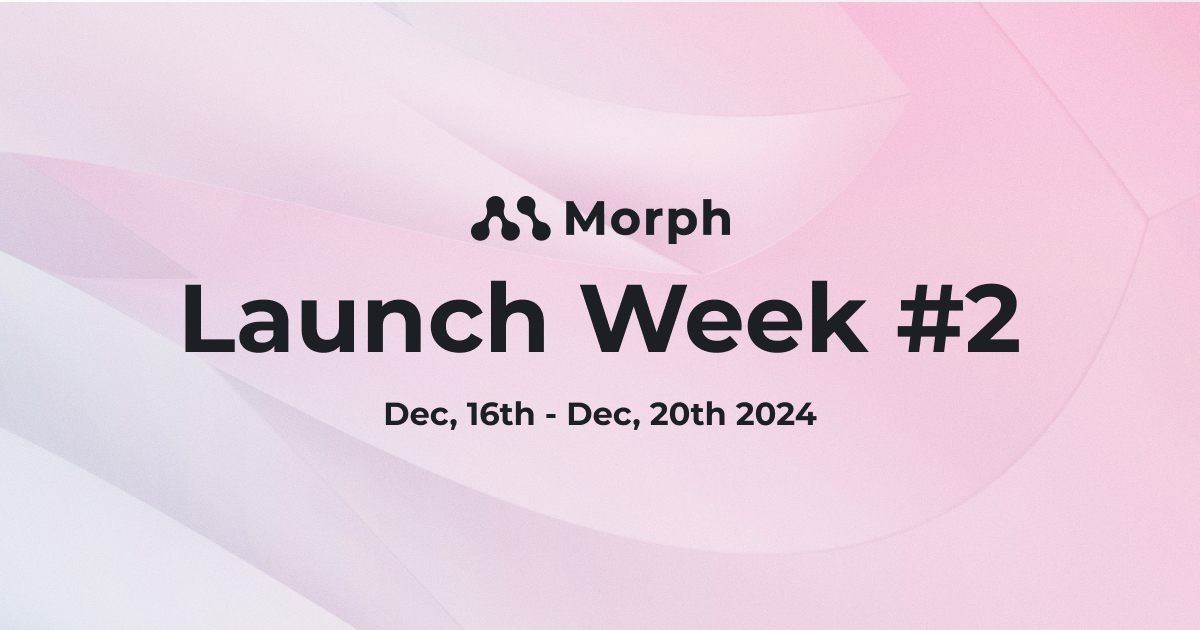
Data Integrations - Launch Week #1

Hello everyone! Today, on the fourth day of Launch Week, we’re excited to introduce how Morph connects with data warehouses and software tools!
There’s no doubt that the first step in building data pipelines or data-driven applications is connecting to your data sources. That's why we place so much importance on data connectivity features.
How to integrate your data sources
Connecting Morph to external data sources is incredibly simple! Just go to the “Data” tab in your workspace, select your connection destination, and follow the prompts in the dialog.
Easy Authentication Management
Many BI tools and data application platforms offer similar connection features, but managing data connection credentials can be one of the most stressful parts of building and running data applications! Morph stands out with its streamlined approach to managing authentication.
Once you set up a data connection in Morph, the authentication information is securely stored and automatically reused as long as the credentials remain valid. If OAuth is used for authentication, Morph will handle token refreshing automatically. This makes connecting to SQL databases as well as SaaS services effortless.
These features allow you to focus your energies on building your data pipelines and applications rather than fiddling around with endless settings!

Supported Services
Currently, Morph’s data connection feature supports the following services:
- Snowflake
- BigQuery
- Redshift
- MySQL
- PostgreSQL
- AWS Athena
- Airtable
- Attio
- Freee
- HubSpot
- Intercom
- Linear
- Mailchimp
- Notion
- Salesforce
- Stripe
We plan to expand the list of supported services continuously, so please get in touch to let us know if you have any requests!
Executing SQL
Once connected to an SQL database, you can run SQL queries directly from the Morph interface. Experiment with various queries in the SQL Playground, and once you've crafted the ideal query, you can convert it into an SQL file with just one click.
Data Fetching with Python
After setting up connections with your software tools, you can retrieve data by calling APIs in Python.
If the service you’re connecting to offers a Python SDK, you can install the desired package and start using it straight away.
Here’s an example of what the data retrieval process looks like:

That’s all for today! Tomorrow, we will discuss templates.
Related Articles

